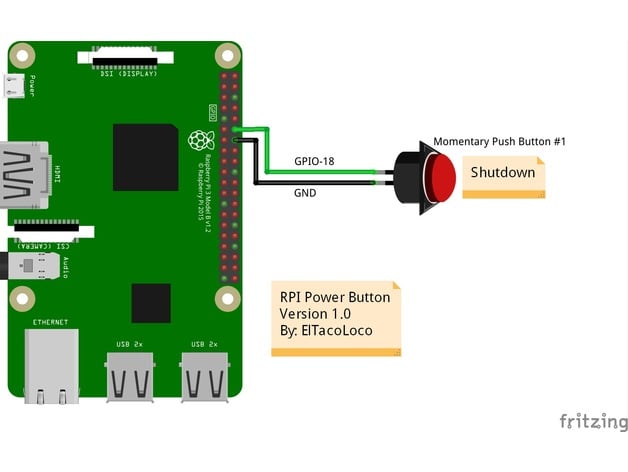Button And Led Holder For Mini NES Pi 3 Case 3D Printer Model
The file 'Button And Led Holder For Mini NES Pi 3 Case 3D Printer Model' is (123dx,stl) file type, size is 84.1KB.
The file 'Button And Led Holder For Mini NES Pi 3 Case 3D Printer Model' is (123dx,stl) file type, size is 84.1KB.
I made and tried this for the Raspberry Pi 3, but this guide should work with most of the Raspberry PI's but some modells don't have the RUN/Reset pinouts.
Shutdown - Shuts the Pi down safely from inside the OS.
Reset/Run - Both resets the Pi and will turn it on if it has been shutdown.
LED - lights up whenever the micro usb power cable is connected, the power button
I made this button and led holder for the Mini NES Pi 3 Case By LKM,
http://www.thingiverse.com/thing:1887826
I didn't really spend much time on the button holder, just made it so it should work for me, included the 3D file if anyone feel the need to edit the thing.
Most Raspberry Pi models have a build in force reboot function, you only need to solder 2 pins to the 2 holes marked "RUN" and the other ends to the Momentary push button. (No programing or further configurations needed)



Simply plugged in 1 female cable to the ground and 1 female cable to the 3.3V pin then solder a 150 Ω resistor to the end of the 3.3V(+) cable and the end of the resistor to the Anode(+) on the LED (the long leg) and soldered the GND(-) cable to the Cathode(-) on the LED (the short leg).
I used a normal 3mm red LED with some hot glue to hold it in place and electrical tape to isolate the metal surface of the legs, but you can also use shrink tube but make shure to isolate each leg separate so you don't short the circuit.
(The 3.3V GPIO PIN are always High (active) when the Raspberry Pi have power connected so the LED will always be active when the Raspberry Pi have power, much like the standby LED on a TV, so you don't need any scripts running in order for it to work with this solution)


In order to controll the GPIO input/output on the Raspberry Pi with Retropie I had to install WiringPI.
First check that wiringPi is not already installed. In a terminal, run:
gpio -v
If you get something, then you have it already installed. The next step is to work out if it’s installed via a standard package or from source. If you installed it from source, then you know what you’re doing – carry on – but if it’s installed as a package, you will need to remove the package first. To do this:
sudo apt-get purge wiringpihash -rThen carry on.
If you do not have GIT installed, then under any of the Debian releases (e.g. Raspbian), you can install it with:
sudo apt-get install git-coreIf you get any errors here, make sure your Pi is up to date with the latest versions of Raspbian: (this is a good idea to do regularly, anyway)
sudo apt-get updatesudo apt-get upgrade
To obtain WiringPi using GIT:
cdgit clone git://git.drogon.net/wiringPi
If you have already used the clone operation for the first time, then:
cd ~/wiringPigit pull originWill fetch an updated version then you can re-run the build script below.
To build/install there is a new simplified script:
cd ~/wiringPi./buildThe new build script will compile and install it all for you – it does use the sudo command at one point, so you may wish to inspect the script before running it.
run the gpio command to check the installation:
gpio -vgpio readallThat should give you some confidence that it’s working OK.
Credits for the wiringpi guide where it belongs:
WiringPi is released under the GNU Lesser Public License version 3.
I used this tutorial: https://www.element14.com/community/docs/DOC-78055/l/adding-a-shutdown-button-to-the-raspberry-pi-b

I used superglue to get the button/led holder to stick to the case and hotglue to secure the LED in place.

Side note:
I included a breadboard view of how i wired everything. Be careful I don't take any responsibility if your raspberry pi go up in a puff of smoke or if you hurt yourself or others.If you are unfamiliar with GPIO/Electronics/Raspberry Pi be careful and read up on it first.
| button_and_led_holder_final.123dx | 79.5KB | |
| button_and_led_holder_final.stl | 23.7KB |